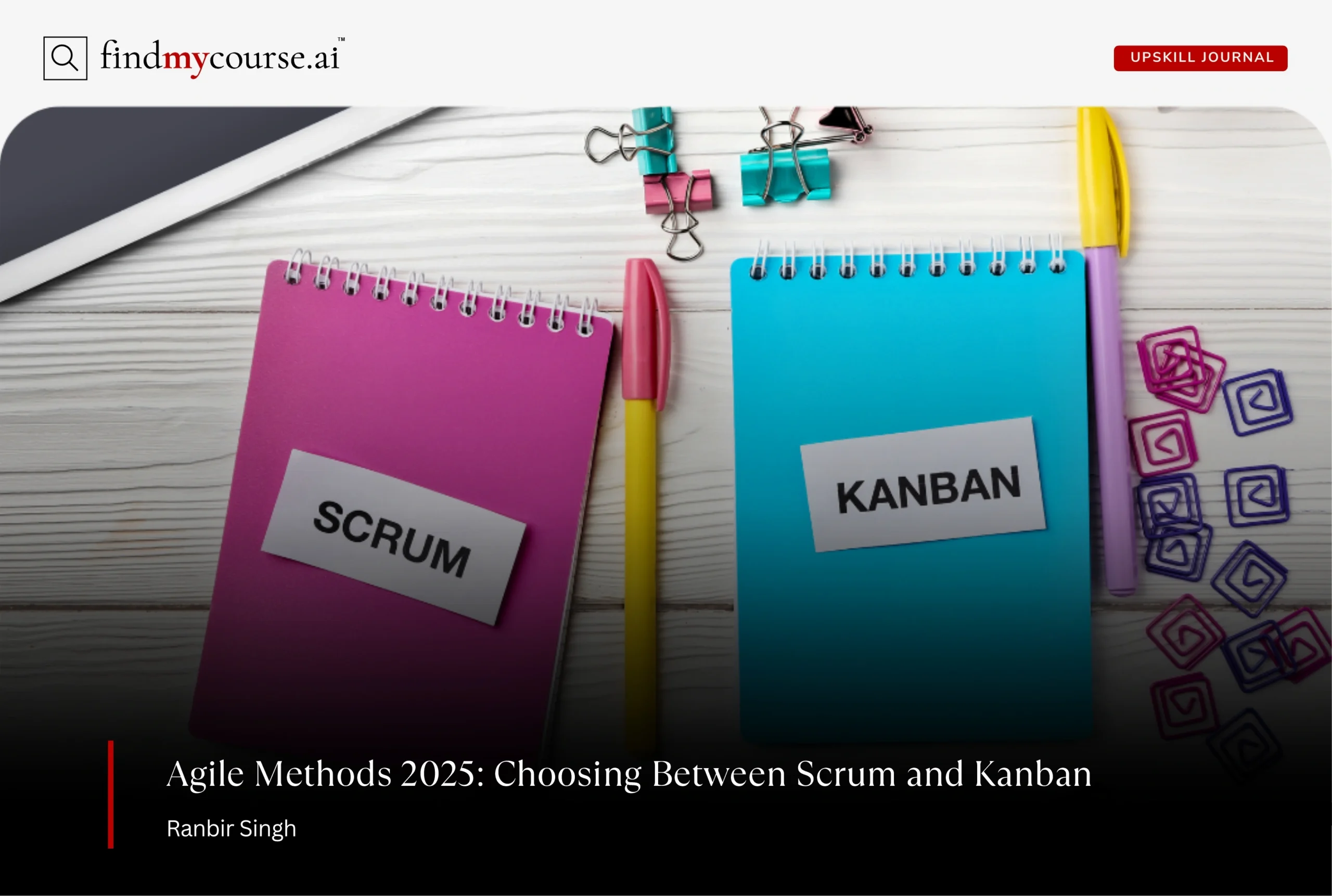In today’s fast-paced world of digital transformation, agile methods have become the backbone of how modern teams deliver value quickly and efficiently. Whether you’re a project manager, developer, or a professional looking to upskill, understanding how Scrum and Kanban work—and which suits your environment—is essential for thriving in today’s dynamic workplaces.
Both Scrum and Kanban are popular frameworks within the Agile ecosystem, but they’re not identical twins. They share the same DNA of flexibility and continuous improvement, yet their approaches to planning, workflow, and accountability differ. Choosing between them isn’t about picking the “best” one—it’s about finding the right fit for your team’s rhythm, goals, and culture.
Understanding Agile Methods: The Foundation of Flexibility
Before diving into the kanban vs scrum debate, it’s important to understand what agile methods truly represent. Agile is more than a set of tools or ceremonies; it’s a mindset—a way of working that embraces change, empowers collaboration, and values customer feedback over rigid plans.
Born from the Agile Manifesto in 2001, these methods encourage teams to deliver work in small, manageable increments rather than waiting for a “perfect” end result. Consequently, feedback loops become shorter, risk is reduced, and adaptability increases.
In essence, agile methods prioritize:
- People over processes – fostering collaboration and communication.
- Working solutions over documentation – focusing on results that add value.
- Adaptability over rigidity – welcoming change at any stage.
Within this philosophy, Scrum and Kanban stand as two leading frameworks, each addressing agility in its own unique way.
What Is Scrum? A Sprint Toward Continuous Improvement
Scrum is one of the most structured agile methods, built around time-boxed iterations called sprints—usually lasting two to four weeks. During each sprint, teams commit to delivering a specific set of tasks or features, guided by clear roles and ceremonies.
Key Elements of Scrum
- Roles: Scrum defines three main roles—Product Owner, Scrum Master, and Development Team. Each plays a crucial part in ensuring clarity, removing roadblocks, and delivering quality.
- Ceremonies: Daily stand-ups, sprint planning, sprint reviews, and retrospectives keep the team aligned, transparent, and continuously improving.
- Artifacts: Tools like the product backlog, sprint backlog, and increment help visualize progress and maintain accountability.
The structure of Scrum provides discipline, predictability, and rhythm—qualities that teams in fast-moving or highly collaborative environments appreciate.
However, Scrum can feel restrictive for teams that face constantly shifting priorities or need ongoing flexibility. That’s where Kanban comes in.
What Is Kanban? A Flow-Based Approach to Agility
Kanban is a more fluid approach within agile methods, designed around visualizing work and improving flow. Originating from Toyota’s manufacturing system, Kanban focuses on continuous delivery rather than fixed sprints.
Key Elements of Kanban
- Visualization: Tasks are represented on a Kanban board, typically with columns such as “To Do,” “In Progress,” and “Done.” This visual transparency helps identify bottlenecks instantly.
- Work-in-Progress (WIP) Limits: By limiting how many tasks can be active at once, teams maintain focus and prevent overload.
- Continuous Flow: Unlike Scrum’s sprints, work moves through the system at its own pace, allowing greater flexibility and faster delivery.
Kanban is ideal for teams that handle unpredictable workloads, such as IT support, maintenance, or operations. It helps maintain a steady rhythm without the pressure of sprint commitments.
Scrum vs Kanban: The Core Differences
When comparing kanban vs scrum, think of Scrum as a series of short, structured races and Kanban as a steady, continuous marathon. Both aim to improve team agility and efficiency, but they differ in how work is planned, managed, and delivered.
| Feature | Scrum | Kanban |
| Planning | Work is organized into fixed-length sprints (usually 2–4 weeks). Each sprint has a defined goal and set of deliverables. | Work flows continuously without time-boxed iterations. Teams add tasks as capacity allows. |
| Roles | Defines three roles: Product Owner, Scrum Master, and Development Team, each with clear responsibilities. | Roles are flexible; any team member can manage or update tasks. Focus is on collaboration and transparency. |
| Commitment | Teams commit to completing sprint goals before moving to the next cycle. | No fixed commitments—work is pulled and prioritized dynamically based on capacity and demand. |
| Meetings | Includes structured events like sprint planning, daily stand-ups, reviews, and retrospectives. | Meetings are optional and held as needed to resolve blockers or review flow efficiency. |
| Change Handling | Changes are discouraged mid-sprint to protect focus and consistency. | Changes can be introduced anytime, offering greater adaptability. |
| Metrics | Measures progress with velocity, sprint burndown charts, and team capacity. | Tracks flow efficiency using lead time, cycle time, and throughput. |
In summary, Scrum enforces discipline and regular rhythm, making it ideal for teams that thrive on structure. Kanban offers continuous flow and adaptability, perfect for fast-changing environments that value flexibility. Both frameworks reflect agile methods in action—just in different ways.
Choosing Between Scrum and Kanban: What Fits Your Team?
Your choice between kanban vs scrum depends on your team’s rhythm, maturity, and the kind of work you handle. Both frameworks can drive success—but the right one aligns naturally with your team’s habits and priorities.
Choose Scrum If…
You value structure, consistency, and measurable progress as scrum suits teams that need clarity and steady momentum through defined planning cycles.
Scrum works best when:
- Projects have clear deliverables or product releases.
- Teams thrive with predictable timelines and sprint goals.
- You want accountability through defined roles like Scrum Master and Product Owner.
- Your team is new to agile methods and benefits from routines such as daily stand-ups and retrospectives.
Scrum builds focus, discipline, and collaboration—perfect for teams that perform best with rhythm and clear direction.
Choose Kanban If…
You value flexibility, flow, and continuous delivery over fixed timelines as kanban adapts easily when priorities change or new tasks appear unexpectedly.
Kanban works best when:
- Workloads are unpredictable (e.g., IT support or marketing operations).
- You prefer visual management—tracking progress on a Kanban board.
- Teams need to limit Work-in-Progress (WIP) to maintain focus and avoid burnout.
- Your team is experienced and self-managing, thriving without rigid sprint boundaries.
Kanban empowers autonomy and transparency while promoting steady improvement—a fluid, adaptable path for teams that embrace change and value ongoing flow.
Ultimately, both Scrum and Kanban promote agility and teamwork. Some organizations even blend the two—adopting a “Scrumban” approach that merges Scrum’s structured cadence with Kanban’s fluidity. The best choice isn’t about one being better; it’s about which framework best fits your team’s current journey toward growth and continuous improvement.
Final Thoughts
Scrum and Kanban are not rivals—they are two pathways leading to the same destination: delivering value efficiently while keeping teams motivated and aligned. If your team needs structure, predictability, and defined roles, Scrum provides a solid foundation. If flexibility, visualization, and flow matter more, Kanban will feel like a natural fit.
In the end, your success with agile methods depends less on which framework you choose and more on how your team lives its principles—collaboration, learning, and adaptability. Take a step back, assess your goals, and make your move—and if you ever need guidance or support, ask our AI assistant for personalized recommendations to help you choose the approach that works best for you.


